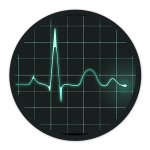
[ SUMMARY ] -MEDICAL UPDATE: Yesterday, my first stop was Quest to donate blood (eleven vials) and then onto visit with my pulmonologist.
[ LABS ] -ROUTINE: The blood tests are mostly routine requests from my Primary Care Physician (PCP) and Pulmonologist (lungs). The exceptions being a few tests searching for potential candidates for excessive fatigue. Results will be available in a few days. For those interested, I’m creating a log (trending data) of several items within the Medical page on this website.
[ PULMONOLOGIST ] -ROUTINE VISIT: As I’m no longer followed by a Lung Transplant Center, I’m seen by an excellent local pulmonologist. I’ve been blessed to have an amazing PCP and Pulmonologist. Both are excellent physicians and people. My PCP “gave” me his cellphone number and asked me to text any questions or requests. My pulmonologist, a physician who listens and does everything possible to reduce the costs of medications and equipment. He walks every patient to check-out and verbally gives the front desk staff instructions.
Pulmonary Function Tests (PFTs) provide an indication of lung volume that can be tracked over time. Deviations provide the first signs of changes (good or bad) and offer indications for additional actions. The primary index derived from PFTs, FEV1 (Forced Expiratory Volume), calculates the amount of air a person can force out of their lungs in one (1) second. My last FEV1 was 1.34 (0.0 to 4.0 liter scale). Yesterday’s FEV1 was 1.69 (a 26% increase).
However, an unknown factor exists between the two values. The previous value was from my spirometer (device used to measure lung volume) while the second was from my physician’s spirometer. Determining comparative results between the two devices (deviations vs. accuracy) requires testing my spirometer today (timely comparison). Either way, I’m quite pleased to see any improvement even if infinitesimal.
Regarding additional pulmonary tests, two weeks from now I will be picking up a “ring” that connects to my iPhone (via Bluetooth). This device is used to perform an overnight “Sleep Study” at home to record sleep apnea events (how often I quit breathing) and measure respiratory rates and oxygen levels. The collected data will provide evidence determining a need for supplemental oxygen while sleeping. Additionally, as my CPAP machine is both ancient and factory recalled, the data should justify the necessity for a new device.
[ IMAGING-SCANS ] -BONE DENSITY: The only remaining medically relevant item to complete is a DEXA or bone density scan. Included amongst all my “medical issues” is osteoporosis or brittle bones. This exists as a side-effect of current and pre-transplant medications. Interestingly enough, the medication I’m taking to help prevent kidney stones appears to be slowly increasing my bone density. The medication reabsorbs calcium versus allowing it to hang out in my kidneys creating spiked rocks.
